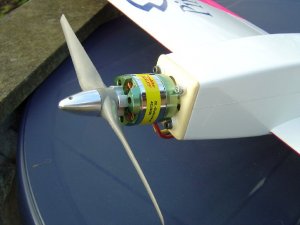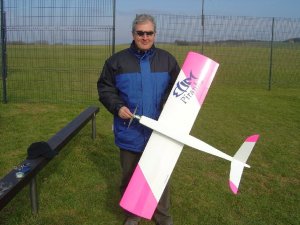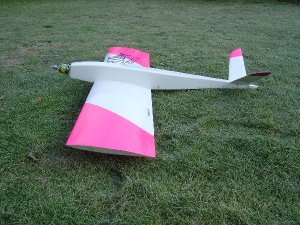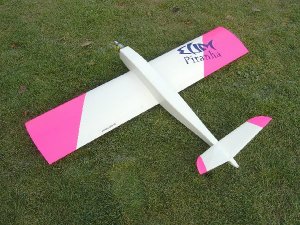Du verwendest einen veralteten Browser. Es ist möglich, dass diese oder andere Websites nicht korrekt angezeigt werden.
Du solltest ein Upgrade durchführen oder einen alternativen Browser verwenden.
Du solltest ein Upgrade durchführen oder einen alternativen Browser verwenden.
E500 2011
- Ersteller 2 fast 2 furious
- Erstellt am
E 500 = Robbe Klasse ???
Hallo zusammen,
Frage: Muß die Fernsteuerung auch von der Fa. Robbe sein-oder sind hier auch Fremdfabrikate erlaubt??
könnte ja sein daß die Fa. XY schnellere Servos etc. hat.....
Wann kommt ein allgemeinbaukasten heraus? oder vielleicht sogar ein Komplettset...
kann auch im Katalog nirgendwo besagte Luftschraube finden....
Ich finde das alles schon ziemlich markenbezogen
Bei Q 500 fliegt doch auch nicht jeder einen LS oder?
Klaus
Hallo zusammen,
Frage: Muß die Fernsteuerung auch von der Fa. Robbe sein-oder sind hier auch Fremdfabrikate erlaubt??
könnte ja sein daß die Fa. XY schnellere Servos etc. hat.....
Wann kommt ein allgemeinbaukasten heraus? oder vielleicht sogar ein Komplettset...
kann auch im Katalog nirgendwo besagte Luftschraube finden....
Ich finde das alles schon ziemlich markenbezogen
Bei Q 500 fliegt doch auch nicht jeder einen LS oder?
Klaus
2 fast 2 furious
User
Q500 E
Q500 E
Hallo zusammen,
es geht bei der neuen Klasse nicht darum, ausschließlich Produkte eines einzigen Herstellers zu fliegen, sondern um eine möglichst einfache Vergleichbarkeit der Antriebskomponenten zu schaffen. Die Wahl hätte auch können auf ein anderes Produkt fallen. Ein Einheitsmotor hätte es trotzdem gegeben...
Grüße
Mario
Q500 E
Hallo zusammen,
es geht bei der neuen Klasse nicht darum, ausschließlich Produkte eines einzigen Herstellers zu fliegen, sondern um eine möglichst einfache Vergleichbarkeit der Antriebskomponenten zu schaffen. Die Wahl hätte auch können auf ein anderes Produkt fallen. Ein Einheitsmotor hätte es trotzdem gegeben...
Grüße
Mario
Kleinatze
Vereinsmitglied
Heute ist Weihnachten:
Juchu, mein Antrieb ist (fast) da! Der Motor wird noch nachgeliefert.
Summa summarum liege ich bei 260 Euro für Motor, Regler und Akku.
Werd mir jetzt noch einen Drehzahlmesser und Strommmessmodul für den Unilog besorgen, damit ich weiß, was Sache ist.
Grüße
Andreas
Juchu, mein Antrieb ist (fast) da! Der Motor wird noch nachgeliefert.
Summa summarum liege ich bei 260 Euro für Motor, Regler und Akku.
Werd mir jetzt noch einen Drehzahlmesser und Strommmessmodul für den Unilog besorgen, damit ich weiß, was Sache ist.
Grüße
Andreas
Hello German E-Q500 flyers,
My name is Joris and fly I E-Q500 in The Netherlands.
We have been flying this new class for 2 years now. We are still struggeling with the regulations, as you seem to be doing as well . The problem is how to control the power and at same time allow different motors/batteries. People have opted for limiters like F5B an F5D, presribe a complete setup or use the governor-mode of a controller.
. The problem is how to control the power and at same time allow different motors/batteries. People have opted for limiters like F5B an F5D, presribe a complete setup or use the governor-mode of a controller.
Last week I have tested the last option and would like to share my experiences.
I bought a CC Phoenix 100 HV ICE and build it into my Great Planes Viper. It is equiped with a Hyperion Z4020-8, 5S Kokam 4000 mAh and a 10 x 8 Graupner prop. The setup is according dutch regulations and does around 215 km/h in the course. The controller is programable via USB and it logs a lot of parameters. Really easy to set up, and loads of options!
With the new controller in governor mode it is easy to set a maximum RPM. It keeps this RPM very precise (+/- 50 RPM) in all stages of the flight and the ESC doesn't get hot.
At the moment it looks like this is a good way of controlling the power. Just prescribe a RPM and a prop and your done! Everybody has the exact same amount of power.
The only downside is the spool up time, it takes a minimum of 3 seconds to reach the 13.000 RPM. But I think this is only irritating when you need to go-around during the landing. Maybe CC can change this in the future.
I have included the logging files. The first is without the governor mode and the second with governor mode set at 13.000 rpm. Can you see where I made a big dive in the second flight? A 800 watt dutch windmill
Greetz Joris


My name is Joris and fly I E-Q500 in The Netherlands.
We have been flying this new class for 2 years now. We are still struggeling with the regulations, as you seem to be doing as well
 . The problem is how to control the power and at same time allow different motors/batteries. People have opted for limiters like F5B an F5D, presribe a complete setup or use the governor-mode of a controller.
. The problem is how to control the power and at same time allow different motors/batteries. People have opted for limiters like F5B an F5D, presribe a complete setup or use the governor-mode of a controller.Last week I have tested the last option and would like to share my experiences.
I bought a CC Phoenix 100 HV ICE and build it into my Great Planes Viper. It is equiped with a Hyperion Z4020-8, 5S Kokam 4000 mAh and a 10 x 8 Graupner prop. The setup is according dutch regulations and does around 215 km/h in the course. The controller is programable via USB and it logs a lot of parameters. Really easy to set up, and loads of options!
With the new controller in governor mode it is easy to set a maximum RPM. It keeps this RPM very precise (+/- 50 RPM) in all stages of the flight and the ESC doesn't get hot.
At the moment it looks like this is a good way of controlling the power. Just prescribe a RPM and a prop and your done! Everybody has the exact same amount of power.
The only downside is the spool up time, it takes a minimum of 3 seconds to reach the 13.000 RPM. But I think this is only irritating when you need to go-around during the landing. Maybe CC can change this in the future.
I have included the logging files. The first is without the governor mode and the second with governor mode set at 13.000 rpm. Can you see where I made a big dive in the second flight? A 800 watt dutch windmill

Greetz Joris
Achim Kaiser
User
Hi Joriszzzz
Hi Joriszzzz
I agree. A very good method to have a limit.
Is it possible to set the max rpm by the program? Just enter a number? Or do You have to let the motor run at a special rpm and then hit a set button? Is it possible to read out the rpm limit - after a flight - to make sure the competitor did not manipulate?
thanks for Your answer
Groetjes
Achim
Hi Joriszzzz
I agree. A very good method to have a limit.
Is it possible to set the max rpm by the program? Just enter a number? Or do You have to let the motor run at a special rpm and then hit a set button? Is it possible to read out the rpm limit - after a flight - to make sure the competitor did not manipulate?
thanks for Your answer
Groetjes
Achim
Hallo Achim,
die CastleCreations Regler lassen sich mit der Software direkt auf eine Zieldrehzahl programmieren.
Dementsprechend kann man die Regler auch wieder auslesen, also nach dem Wettbewerb schauen, ob die Drehzahl wirklich fix eingestellt wurde.
Das ist das gleiche Prinzip, dass wir auch bei EF1 nutzen.
Ich mal mal ein paar Screenshots.

Björn
die CastleCreations Regler lassen sich mit der Software direkt auf eine Zieldrehzahl programmieren.
Dementsprechend kann man die Regler auch wieder auslesen, also nach dem Wettbewerb schauen, ob die Drehzahl wirklich fix eingestellt wurde.
Das ist das gleiche Prinzip, dass wir auch bei EF1 nutzen.
Ich mal mal ein paar Screenshots.

Björn
impi
User
Moin Moin
Habe meinen neuen quicky fertig. Auch endlich mal ein anständiges Messgerät.
Nun folgendes. Antrieb Motor Scorpion HK3026-1000 Propeller APC N 8,75x7,5 Regler 100 Ampere Turnigy.
Gestern abend schnell auf der Terasse mal hochlaufen lassen. Kann das wirklich sein. Das der Antrieb 67 Ampere, ca. 1180 Watt an 5s Lipo 5000 mAh (voll geladen) zieht?
Ihr fliegt doch gleiche Luftschraube Motor 1000 1/min aber mit 6 s Lipo und kommt auf ungefähr gleichen wert.
Ist der Scorpion so viel stärker?
Grüße
Mario
Habe meinen neuen quicky fertig. Auch endlich mal ein anständiges Messgerät.
Nun folgendes. Antrieb Motor Scorpion HK3026-1000 Propeller APC N 8,75x7,5 Regler 100 Ampere Turnigy.
Gestern abend schnell auf der Terasse mal hochlaufen lassen. Kann das wirklich sein. Das der Antrieb 67 Ampere, ca. 1180 Watt an 5s Lipo 5000 mAh (voll geladen) zieht?
Ihr fliegt doch gleiche Luftschraube Motor 1000 1/min aber mit 6 s Lipo und kommt auf ungefähr gleichen wert.
Ist der Scorpion so viel stärker?
Grüße
Mario
impi
User
Moin Michael
wollte heute abend bzw. Morgen nochmal alles durchmessen. Incl. Drehzahl ging leider gestern abend nicht mehr da es schon zu dunkel war.
Bist du am WE aufm Platz? Sonntag soll es laut Wetterbericht nicht regnen.
Soweit ich gestern aber sehen konnte waren es: 67 Ampere, ca. 1180 Watt ergo 17,5 volt.
Luftschraube 8,75x7,5 N
grüßle
Mario
wollte heute abend bzw. Morgen nochmal alles durchmessen. Incl. Drehzahl ging leider gestern abend nicht mehr da es schon zu dunkel war.
Bist du am WE aufm Platz? Sonntag soll es laut Wetterbericht nicht regnen.
Soweit ich gestern aber sehen konnte waren es: 67 Ampere, ca. 1180 Watt ergo 17,5 volt.
Luftschraube 8,75x7,5 N
grüßle
Mario
2 fast 2 furious
User
Drehzahl, Spannung und Strom
Drehzahl, Spannung und Strom
Hallo Namensvetter,
ich glaube wir vergleichen hier grade Äpfel mit Birnen. Die von mir angegebenen Werte beziehen sich auf Drehzahl, Spannung und Strom im Flug! Am Boden liegt mein gemessener Strom auch weit über 70 A. Nach dem Start geht der Strom dann zurück.
Die angegebene Leerlaufdrehzahl von 1000 U/V/min erreichst du unter Last mit keinem Motor! Faustformel ist Leerlaufdrehzahl x ca.0,8
6 x 3,7 x 1000 = 22200 U/min x 0,8 = 17760 U/min
Mit 5S dürftest du auf ca. 15000 1/min kommen. Sei denn die angegebene Leerlaufdrehzahl deckt sich nicht mit der wirklichen...
Hast du die Möglichkeit ein Flug zu loggen? Eine Unilog ist (auch für andere Messungen / Bereiche) eine Sinnvolle Anschafung, um Antriebe wirklich genau zu prüfen bzw. zu optimieren!
Grüße
Mario
Drehzahl, Spannung und Strom
Hallo Namensvetter,
ich glaube wir vergleichen hier grade Äpfel mit Birnen. Die von mir angegebenen Werte beziehen sich auf Drehzahl, Spannung und Strom im Flug! Am Boden liegt mein gemessener Strom auch weit über 70 A. Nach dem Start geht der Strom dann zurück.
Die angegebene Leerlaufdrehzahl von 1000 U/V/min erreichst du unter Last mit keinem Motor! Faustformel ist Leerlaufdrehzahl x ca.0,8
6 x 3,7 x 1000 = 22200 U/min x 0,8 = 17760 U/min
Mit 5S dürftest du auf ca. 15000 1/min kommen. Sei denn die angegebene Leerlaufdrehzahl deckt sich nicht mit der wirklichen...
Hast du die Möglichkeit ein Flug zu loggen? Eine Unilog ist (auch für andere Messungen / Bereiche) eine Sinnvolle Anschafung, um Antriebe wirklich genau zu prüfen bzw. zu optimieren!
Grüße
Mario
impi
User
So hallo
komme gerade aus dem Garten.
Habe Drehzahlen gemessen. Im Stand natürlich. habe leider noch nix zum loggen.
Drehzahl 5 s 5000 voll Laufzeit so 30 sec. = pendelt sich auf ein 16000 1/min.
Drehzal 6s 3300 voll LAufzeit 30 sec = pendelt sich auf 17100 1/min
strom 5s nach 30 sec 62 ampere
strom 6s nach 30 sec 68 ampere
Denke doch in der Luft wird der unterschied schon deutlicher sein. Hoffe es jedenfalls. 1 Lipo zelle mehr ergibt nur Knappe 1000 umdrehungen mehr?
Naja sofern morgen Wetter Ok. Gehts zum erstflug.
Grüße Mario
komme gerade aus dem Garten.
Habe Drehzahlen gemessen. Im Stand natürlich. habe leider noch nix zum loggen.
Drehzahl 5 s 5000 voll Laufzeit so 30 sec. = pendelt sich auf ein 16000 1/min.
Drehzal 6s 3300 voll LAufzeit 30 sec = pendelt sich auf 17100 1/min
strom 5s nach 30 sec 62 ampere
strom 6s nach 30 sec 68 ampere
Denke doch in der Luft wird der unterschied schon deutlicher sein. Hoffe es jedenfalls. 1 Lipo zelle mehr ergibt nur Knappe 1000 umdrehungen mehr?
Naja sofern morgen Wetter Ok. Gehts zum erstflug.
Grüße Mario
impi
User
So am Sonntag war ein erfolgreicher Tag.
Was soll ich sagen,
Starten war viel einfacher als mit dem alten Rumpf. Denke der Tipp mit dem Schwerpunkt war des Rätsels lösung. Desweitern rollt er jetzt auch gerade aus. Vieleicht war der alte Rumpf auch ein wenig verzogen. Wer weiß.
Muss halt höllisch aufpassen sonst stellt er sich beim starten auf den Kopf. Denke das liegt an den kleinen Rädchen in Verbindung mit nasser Rasenpisten.
Der Strom bei 5s muss in der Luft auf jedenfall deutlich zurückgehen. Da ich nach gut 4 min vollgas nur ca. 2800 mA nachgeladen hatte.
Speed war fürs erste und zum eingewöhnen Ok. Da geht noch mehr!
Nächstemal 6s.
Grüße
Mario
Was soll ich sagen,
Starten war viel einfacher als mit dem alten Rumpf. Denke der Tipp mit dem Schwerpunkt war des Rätsels lösung. Desweitern rollt er jetzt auch gerade aus. Vieleicht war der alte Rumpf auch ein wenig verzogen. Wer weiß.
Muss halt höllisch aufpassen sonst stellt er sich beim starten auf den Kopf. Denke das liegt an den kleinen Rädchen in Verbindung mit nasser Rasenpisten.
Der Strom bei 5s muss in der Luft auf jedenfall deutlich zurückgehen. Da ich nach gut 4 min vollgas nur ca. 2800 mA nachgeladen hatte.
Speed war fürs erste und zum eingewöhnen Ok. Da geht noch mehr!
Nächstemal 6s.
Grüße
Mario
attackjack
User
E-Piranha
E-Piranha
Hi Jungs,
wie sieht´s aus, habt Ihr die Messer gewetzt?
Ich für meinen Teil bin wettkampfbereit... habe heute meinen E-Piranha eingeflogen. Ging völlig entspannt über die Bühne....
Wie ich bereits weiter vorne schrieb:
Man nehme:
Eine ausgediente Fläche von einem Piranha, die einer Voll-GFK-Fläche weichen mußte.
Ein altes Leitwerk, das aus einem Absturz aus dem letzten EuroCup in Tongeren übrig geblieben ist.
Einen GFK-Rumpf für Piranha / Podenco samt Einbaufrästeilen.
Das Antriebsset (bei dem man ja nichts falsch machen kann).
Ein Schalterkabel.
Einen Empfängerakku.
Empfänger und Servos.....
und komplettiere das Ganze in vorgesehener Art und Weise.
Und heraus kommt nach kurzer Bauzeit mit geringem Aufwand ein E-Piranha:
Die Vorbereitung vor dem Einfliegen war:
1. den Schwerpunkt exakt auf 72mm einstellen (passte übrigens auf Anhieb ohne Bleizugabe ).
).
2. Die Flächenballance mußte durch Herausbohren von bereits vorhandenem Blei der linken Fläche eingestellt werden.
3. Die Ausschläge der Ruder wurden gemäß Erfahrung und Angaben der Bauanleitung eingestellt.
4. Expo wie bekannt einstellen, (40% auf Höhe und Tiefe, 25% auf Quer)
Sicherheitshalber spielte einer der am Platz anwesenden Kollegen noch den Starthelfer und dann gings los. Vollgas rein, der Piranha hob nach 2m ab, beschleunigte und lag sofort gut am Ruder. 2 Zacken tief und 3 zacken links trimmen und schon gings auf Kurs. Der Speed ist moderat und dürfte auch den Pyloneinsteiger nicht überfordern. Er liegt etwas unter Nelson SS Niveau aber deutlich höher als Q500 Sport mit unfrisiertem Rossi.
Es macht schon richtig Spass, die Runden sind flüssig zu fliegen und es muß nicht immer auf der Geraden geradegelegt werden. Da kommt schon Rennfeeling auf

Übrigens, das mit dem Scharfmachen des Antriebes habe ich wie folgt gelöst:
Ich nutze einen separaten Empfänger-Akku mit Schalterkabel, wie gewohnt.
Der BEC-Stecker des Stellers wird über ein Zwischenkabel (Stecker - Buchse) ohne die Plusverbindung an den Empfänger gesteckt.
So wird die Steuerleitung für den Drehzahlsteller angeschlossen, da der Empfänger nicht mit Strom versorgt wird, ist sowohl Anlage als auch Steller aus.
Ich stecke nun den Flugakku an und verschließe den Akkuschacht.
Nach Einschalten von Sender und Empfänger meldet der Regler sich scharf.
Reicht das so nach Regel, oder muß an der Startstelle erst der Akku eingesteckt werden?
Soweit erstmal aus Bad Driburg..... und wenn einer noch einen Bausatz mit lackiertem GFK-Rumpf braucht, ich habe da noch 3 Rümpfe aus Vorserie, mit kleinen Macken.....
Liebe Grüße aus Bad Driburg
Uli
E-Piranha
Hi Jungs,
wie sieht´s aus, habt Ihr die Messer gewetzt?
Ich für meinen Teil bin wettkampfbereit... habe heute meinen E-Piranha eingeflogen. Ging völlig entspannt über die Bühne....
Wie ich bereits weiter vorne schrieb:
Man nehme:
Eine ausgediente Fläche von einem Piranha, die einer Voll-GFK-Fläche weichen mußte.
Ein altes Leitwerk, das aus einem Absturz aus dem letzten EuroCup in Tongeren übrig geblieben ist.
Einen GFK-Rumpf für Piranha / Podenco samt Einbaufrästeilen.
Das Antriebsset (bei dem man ja nichts falsch machen kann).
Ein Schalterkabel.
Einen Empfängerakku.
Empfänger und Servos.....
und komplettiere das Ganze in vorgesehener Art und Weise.
Und heraus kommt nach kurzer Bauzeit mit geringem Aufwand ein E-Piranha:
Die Vorbereitung vor dem Einfliegen war:
1. den Schwerpunkt exakt auf 72mm einstellen (passte übrigens auf Anhieb ohne Bleizugabe
 ).
).2. Die Flächenballance mußte durch Herausbohren von bereits vorhandenem Blei der linken Fläche eingestellt werden.
3. Die Ausschläge der Ruder wurden gemäß Erfahrung und Angaben der Bauanleitung eingestellt.
4. Expo wie bekannt einstellen, (40% auf Höhe und Tiefe, 25% auf Quer)
Sicherheitshalber spielte einer der am Platz anwesenden Kollegen noch den Starthelfer und dann gings los. Vollgas rein, der Piranha hob nach 2m ab, beschleunigte und lag sofort gut am Ruder. 2 Zacken tief und 3 zacken links trimmen und schon gings auf Kurs. Der Speed ist moderat und dürfte auch den Pyloneinsteiger nicht überfordern. Er liegt etwas unter Nelson SS Niveau aber deutlich höher als Q500 Sport mit unfrisiertem Rossi.
Es macht schon richtig Spass, die Runden sind flüssig zu fliegen und es muß nicht immer auf der Geraden geradegelegt werden. Da kommt schon Rennfeeling auf


Übrigens, das mit dem Scharfmachen des Antriebes habe ich wie folgt gelöst:
Ich nutze einen separaten Empfänger-Akku mit Schalterkabel, wie gewohnt.
Der BEC-Stecker des Stellers wird über ein Zwischenkabel (Stecker - Buchse) ohne die Plusverbindung an den Empfänger gesteckt.
So wird die Steuerleitung für den Drehzahlsteller angeschlossen, da der Empfänger nicht mit Strom versorgt wird, ist sowohl Anlage als auch Steller aus.
Ich stecke nun den Flugakku an und verschließe den Akkuschacht.
Nach Einschalten von Sender und Empfänger meldet der Regler sich scharf.
Reicht das so nach Regel, oder muß an der Startstelle erst der Akku eingesteckt werden?
Soweit erstmal aus Bad Driburg..... und wenn einer noch einen Bausatz mit lackiertem GFK-Rumpf braucht, ich habe da noch 3 Rümpfe aus Vorserie, mit kleinen Macken.....
Liebe Grüße aus Bad Driburg
Uli
Anhänge
Viper E500. Part 1
Viper E500. Part 1
Hi, all pylon friends.
I have built a GP Viper 500 with electric drive in accordance with the new German E 500 pylon racing rules. I now have about 15 test flights with data logging of several parameters. It is a nice model for pylon racing in the new interesting E500 class! First some building notes.
The opening in the fuse at the former under the wing leading edge was made larger to get the Roxxy 6s 2650 mAh 45C motor battery into the tank compartment. To get the CG position right, the battery should go as far forward as possible. It is a tight fit vertically. The strength and stiffness of the fuse around this former was restored by applying some epoxy and carbon cloth in that area. The bottom of the fuse where the landing gear is fastened was also strengthened using carbon and glass cloth with epoxy.
The motor firewall was reinforced by drilling six 1,7 mm diam. holes, three on each side, about 15 mm into the engine firewall. Six 1,6 mm diam. carbon fiber rods were then inserted in the predrilled holes and glued in place with epoxy. I wanted to have the top of the tank hatch removable and decided to reinforce this area using plywood. To be able to fasten the motor to the four original blind nuts in the firewall I made a custom backmount adapter of aluminum for the Roxxy 4250/5 motor. A slot 1 mm high and 30 mm wide was made at the top of the firewall for cooling air to the ESC situated on top of the motor battery. To release this air a slot was made at top of the fuse in front of the V-tail. The Viper is known to be weak where the V-tail is fastened and was therefore hardened there using epoxy and glass cloth which added about 2 g to the fuse.
I wanted to have the option to hand start and then belly land on snow (without landing gear), very convenient during the winter time in Sweden! The whole length of the balsa fuse bottom was therefore hardened using 100 g/m2 glass cloth and epoxy. The covering in that area was removed before the glass cloth was applied. The fuse bottom was then recovered using Monocote. This hardening operation added about 10 g to my Viper.
As required in the E500 rules I used a separate battery (weight 40 g) to power the receiver. Three digital Futaba S9650 servos weighing 26 g each were used for ailerons and the V-tail. A Castle Creations Ice 100 Lite ESC was used to control the Roxxy 4250/5 motor. The weight of this ESC with wires shortened to fit was about 60 g. The default settings for outrunner motors but with “no brake” and a “soft cutoff voltage” of 3,1 V/cell were used.
The motor battery, the receiver battery and the receiver (Futaba R617FS) were placed as far forward as possible in an effort to get the CG position at the recommended position 75 mm behind the leading edge of the wing. The result was a CG at 77 mm and a total weight of 1930 g, ready to fly with landing gear. I considered a CG at 77 mm to be OK for the first test flight. However, it was then very jumpy to fly, I therefore moved the CG about 5 mm forward by mounting the supplied engine mount intended for a combustion engine as a backmount for the Roxxy 4250/5. This aluminum plate weighs 28 g and moved the CG to 73 mm behind the leading edge of the wing and increased the total weight of my Viper E500 to 1960 g.
The current rules for E500 state that the weight of the ready-to-fly airplane shall be minimum 1850 g. However I believe it will be difficult to get below 1900 g with a Viper E500, and probably also with many other non-composite E500 pylon racing models. To avoid the risk that people will sacrifice strength and safety, I recommend that the 1850 g limit in the rules should be increased to at least 1900 g.
The APC 8,75x7,5N D-1 propeller stated in the rules for E500 is no longer in production. I have used APC 8,75x7,5NN D-1 and 8,75x8,0NN D-1.
Comments and questions in English or German are welcomed. I hope to be back in a few days to give you information and comments on flight performance and in-flight parameters like speed, rpm, current, voltage, ESC and motor temperature.
Stay tuned
/Gert
Viper E500. Part 1
Hi, all pylon friends.
I have built a GP Viper 500 with electric drive in accordance with the new German E 500 pylon racing rules. I now have about 15 test flights with data logging of several parameters. It is a nice model for pylon racing in the new interesting E500 class! First some building notes.
The opening in the fuse at the former under the wing leading edge was made larger to get the Roxxy 6s 2650 mAh 45C motor battery into the tank compartment. To get the CG position right, the battery should go as far forward as possible. It is a tight fit vertically. The strength and stiffness of the fuse around this former was restored by applying some epoxy and carbon cloth in that area. The bottom of the fuse where the landing gear is fastened was also strengthened using carbon and glass cloth with epoxy.
The motor firewall was reinforced by drilling six 1,7 mm diam. holes, three on each side, about 15 mm into the engine firewall. Six 1,6 mm diam. carbon fiber rods were then inserted in the predrilled holes and glued in place with epoxy. I wanted to have the top of the tank hatch removable and decided to reinforce this area using plywood. To be able to fasten the motor to the four original blind nuts in the firewall I made a custom backmount adapter of aluminum for the Roxxy 4250/5 motor. A slot 1 mm high and 30 mm wide was made at the top of the firewall for cooling air to the ESC situated on top of the motor battery. To release this air a slot was made at top of the fuse in front of the V-tail. The Viper is known to be weak where the V-tail is fastened and was therefore hardened there using epoxy and glass cloth which added about 2 g to the fuse.
I wanted to have the option to hand start and then belly land on snow (without landing gear), very convenient during the winter time in Sweden! The whole length of the balsa fuse bottom was therefore hardened using 100 g/m2 glass cloth and epoxy. The covering in that area was removed before the glass cloth was applied. The fuse bottom was then recovered using Monocote. This hardening operation added about 10 g to my Viper.
As required in the E500 rules I used a separate battery (weight 40 g) to power the receiver. Three digital Futaba S9650 servos weighing 26 g each were used for ailerons and the V-tail. A Castle Creations Ice 100 Lite ESC was used to control the Roxxy 4250/5 motor. The weight of this ESC with wires shortened to fit was about 60 g. The default settings for outrunner motors but with “no brake” and a “soft cutoff voltage” of 3,1 V/cell were used.
The motor battery, the receiver battery and the receiver (Futaba R617FS) were placed as far forward as possible in an effort to get the CG position at the recommended position 75 mm behind the leading edge of the wing. The result was a CG at 77 mm and a total weight of 1930 g, ready to fly with landing gear. I considered a CG at 77 mm to be OK for the first test flight. However, it was then very jumpy to fly, I therefore moved the CG about 5 mm forward by mounting the supplied engine mount intended for a combustion engine as a backmount for the Roxxy 4250/5. This aluminum plate weighs 28 g and moved the CG to 73 mm behind the leading edge of the wing and increased the total weight of my Viper E500 to 1960 g.
The current rules for E500 state that the weight of the ready-to-fly airplane shall be minimum 1850 g. However I believe it will be difficult to get below 1900 g with a Viper E500, and probably also with many other non-composite E500 pylon racing models. To avoid the risk that people will sacrifice strength and safety, I recommend that the 1850 g limit in the rules should be increased to at least 1900 g.
The APC 8,75x7,5N D-1 propeller stated in the rules for E500 is no longer in production. I have used APC 8,75x7,5NN D-1 and 8,75x8,0NN D-1.
Comments and questions in English or German are welcomed. I hope to be back in a few days to give you information and comments on flight performance and in-flight parameters like speed, rpm, current, voltage, ESC and motor temperature.
Stay tuned
/Gert
Anhänge
-
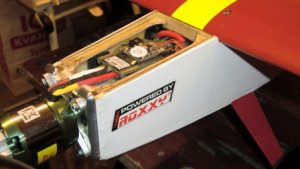 Casio import 2011-01-31 020.JPG84,6 KB · Aufrufe: 60
Casio import 2011-01-31 020.JPG84,6 KB · Aufrufe: 60 -
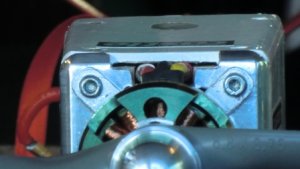 Casio import 2011-01-31 037.JPG77,3 KB · Aufrufe: 56
Casio import 2011-01-31 037.JPG77,3 KB · Aufrufe: 56 -
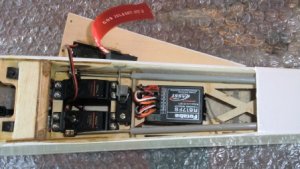 Casio import 2011-01-31 038.JPG103,8 KB · Aufrufe: 61
Casio import 2011-01-31 038.JPG103,8 KB · Aufrufe: 61 -
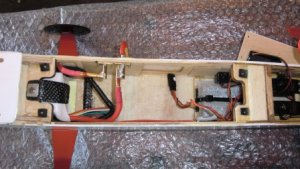 Casio import 2011-01-31 039.JPG112,1 KB · Aufrufe: 56
Casio import 2011-01-31 039.JPG112,1 KB · Aufrufe: 56 -
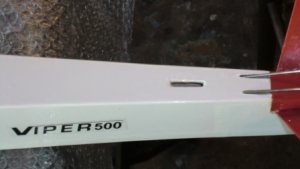 Casio import 2011-01-31 040.JPG64,2 KB · Aufrufe: 64
Casio import 2011-01-31 040.JPG64,2 KB · Aufrufe: 64 -
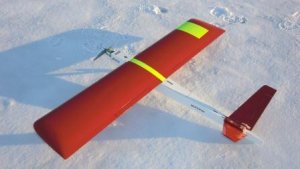 Casio import 2011-01-31 031.JPG33,7 KB · Aufrufe: 49
Casio import 2011-01-31 031.JPG33,7 KB · Aufrufe: 49
Achim Kaiser
User
Hello Gert!
Hello Gert!
Very nice to see You doing Q500 E in Sweden!
The propeller is still on the APC list. Braeckmann Germany is also selling it. I hope it is still available. This type of propeller is used by many competitors in Q500 in Europe. Almost everybody uses it on his Nelson L/S engine. It is also the fastest one as we know from many tests and races (as long as You use the European setup w/o nitro). It is called LP088775 8.75x7.75. The "N" is not visible in the list but printed on the propeller itself.
APC: http://www.apcprop.com/pindex.asp?Page=2
Propeller Type: LP088775 8.75x7.75
Många hälsningar
Achim
Hello Gert!
Very nice to see You doing Q500 E in Sweden!
The propeller is still on the APC list. Braeckmann Germany is also selling it. I hope it is still available. This type of propeller is used by many competitors in Q500 in Europe. Almost everybody uses it on his Nelson L/S engine. It is also the fastest one as we know from many tests and races (as long as You use the European setup w/o nitro). It is called LP088775 8.75x7.75. The "N" is not visible in the list but printed on the propeller itself.
APC: http://www.apcprop.com/pindex.asp?Page=2
Propeller Type: LP088775 8.75x7.75
Många hälsningar
Achim
Propeller for E500
Propeller for E500
Hello Achim,
Thanks for the information on propeller for E500. However, according to the rules for Q500E one must use APC 8.75x7.5N D1, not 8.75x7.75N D1. Right?
I believe my Viper is the first Q500 E model in Sweden. I plan to post information about it and demonstate it at this years first pylon race meeting on March 5 in Falun, Sweden. We will see if it can generate interest to start Q500 E as a pylon racing class here also. Anyway I believe this class of models can be used for improving a pilots flying skill on the pylon course with less noise problems and less hazzle (especially in the winter time) than with combustion engines.
Grüsse
/Gert
Propeller for E500
Hello Achim,
Thanks for the information on propeller for E500. However, according to the rules for Q500E one must use APC 8.75x7.5N D1, not 8.75x7.75N D1. Right?
I believe my Viper is the first Q500 E model in Sweden. I plan to post information about it and demonstate it at this years first pylon race meeting on March 5 in Falun, Sweden. We will see if it can generate interest to start Q500 E as a pylon racing class here also. Anyway I believe this class of models can be used for improving a pilots flying skill on the pylon course with less noise problems and less hazzle (especially in the winter time) than with combustion engines.
Grüsse
/Gert
Achim Kaiser
User
LP08875 8.75x7.5
LP08875 8.75x7.5
Yes, I made a mistake. It is LP08875 8.75x7.5
Achim
LP08875 8.75x7.5
Yes, I made a mistake. It is LP08875 8.75x7.5
Achim
Ähnliche Themen
- Antworten
- 0
- Aufrufe
- 5K
- Antworten
- 33
- Aufrufe
- 13K

